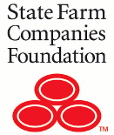Activities at the End of the Academic Year
Introduction
It is critical that the end of the academic year be a time for reflection, self-assessment, and continuing the process of ongoing program improvement. While celebrations can reinforce a sense of community and accomplishment, other end-of-year activities can go far to assist program leaders in examining progress and identifying future goals and tasks.
Tasks
- Implement program evaluation (See Standard 9, Illinois Induction Program Continuum)
- Administer end-of-year evaluation instruments. Compile and analyze the resulting data.
- Determine how evaluation results will be articulated and publicized
- Create a plan for program revisions based on evaluation results
- Use previous baseline data to compare with end-of-year evaluation data
- Use the Illinois Induction Program Continuum as the basis for self-assessment and program improvement
- Design and implement recognition activities
- Create end-of-year celebrations that focus on the accomplishments of the program, mentors, and beginning teachers
- Establish a forum for beginning teachers and mentors to engage in end-of-year reflection
- Focus on the following year and its mentoring activities
- Plan for sustainability: looking to the future
- Conduct a structured discussion on continuous program improvement. This can be done in a mentor/beginning teacher forum as well as in a Collaborative Leadership Team meeting.
- Communicate with stakeholders regarding Collaborative Leadership Team findings and plans for the future
- Provide for transition of new program leaders
- Provide time for outgoing and incoming leaders to meet and share information
- Provide history, background, goals, challenges, and other relevant information to new program leaders
- Provide new leader(s) with ready access to relevant documents, data, files, and online information
- Clearly articulate stakeholder and leadership roles for the new leader(s)
- Implement program evaluation (See Standard 9, Illinois Induction Program Continuum)
Highly Effective Practices
- Evaluation tools should be part of a formative process that leads to practical program revisions.
- Program progress and development should be thought of in terms of ongoing program improvement, not merely as an end-of-year celebration.


